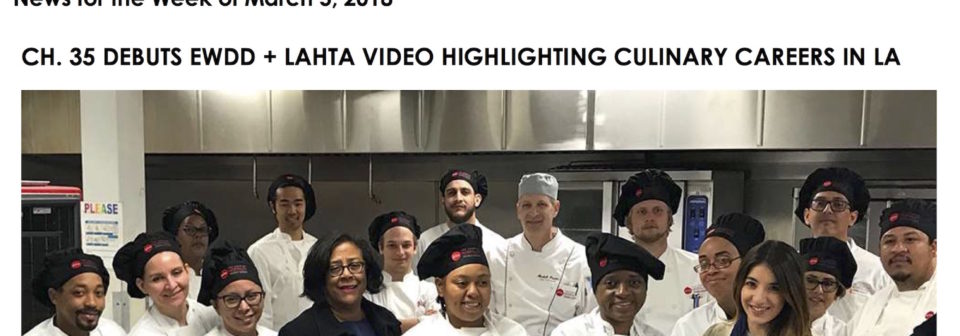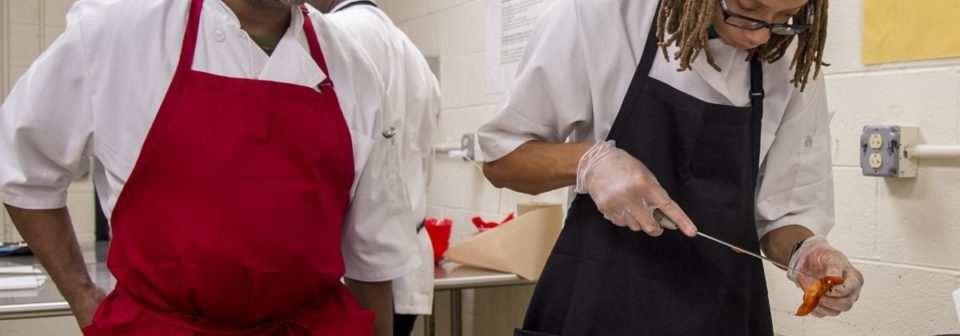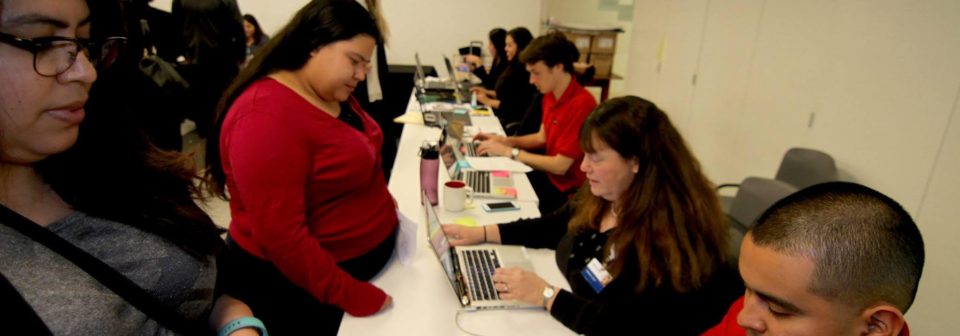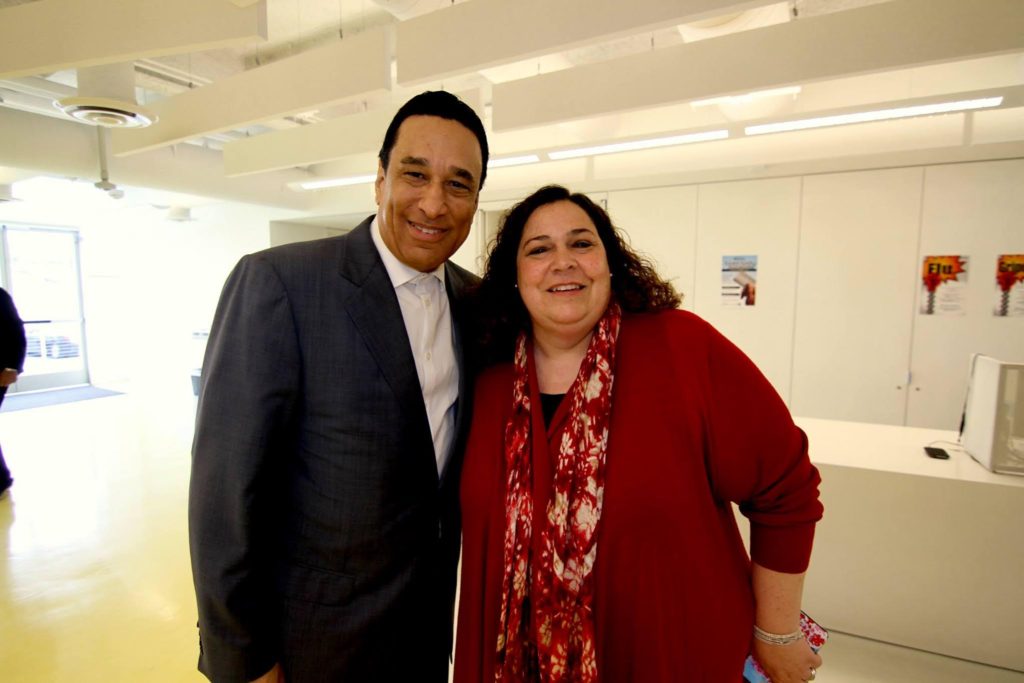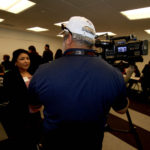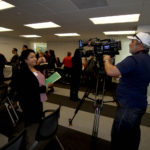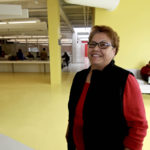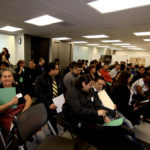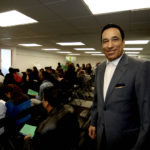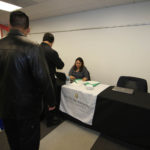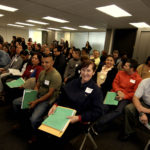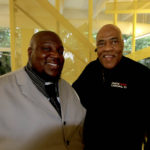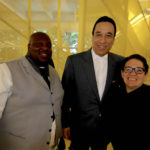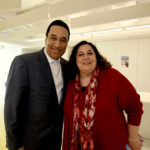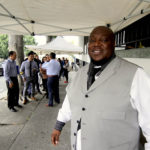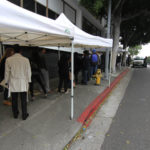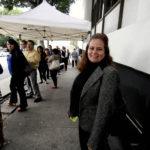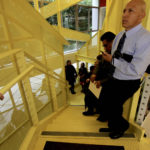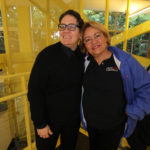lahta
Mario Edwards, a 30-year-old, African American man who lives in Lynwood with his wife and 3 young children (ages 12, 6 and 1), is dedicated to his family and doing whatever he needs to provide for them. A native of Los Angeles and a true survivor himself, Mario knows firsthand the importance of family having overcome a number of struggles early in life, including being shot multiple times while in his senior year at Dorsey High School. Pulling through, Mario resumed school at Los Angeles’ View Park High School, where he graduated and then shortly thereafter welcomed his first daughter into the world.
With a growing family to care for and determined to do all he could to provide, Mario worked for a number of years in a warehouse as a shipping and receiving clerk. He also did some housekeeping work to help make ends meet. So, when Mario’s Grandmother shared with him a flyer she had received from church with information about the Hospitality Training Academy (HTA) and a new U.S. Department of Labor Room Attendant/Housekeeping Apprenticeship Program they were launching, he decided to go check it out. (more…)
Read More
LA CityView Channel 35 debuted “Preparing for a Career in Hospitality,” on March 7, 2018, a 6-minute video sponsored by EWDD highlighting how aspiring chefs can receive culinary training through the City of Los Angeles Economic and Workforce Department and the Los Angeles Hospitality Training Academy (LAHTA).
The video includes testimonials from a successful LAHTA graduate who now works in the kitchen at the Sheraton Gateway LAX, along with interviews from executive chefs at area hotels and the Staples Center outlining opportunities in LA’s growing hospitality industry.
“Culinary arts is particularly exciting because it has no boundaries on age. Young or old, you are able to work in culinary arts,” said EWDD General Manager Jan Perry, who was also featured in the video. (more…)
Read More
Abrehet Seifu and her husband walked into the HTA’s office at Virginia Avenue Park in Santa Monica in September of 2016. Her husband, who is a current City of Santa Monica maintenance worker responsible for beach sanitation, had heard mention of the program. It wasn’t, however, until he saw a flyer about the HTA posted in the building where he lives that he encouraged his wife, Abrehet, to reach out to us for services.
During one of the HTA’s initial meetings with the couple, they shared that Abrehet had been a victim of human trafficking by a relative in New York who brought her there from Ethiopia and forced her to work in virtual slavery, caring for the family’s children. In 2008, she was able to get away and eventually made her way to California. She now lives in Santa Monica’s Pico Neighborhood in a Community Corporation of Santa Monica (CCSM) affordable housing unit with her husband and her four children, who range in age from 1 to 7 years old.
Read More
Business— Labor and Unions
Here’s the story of how a union helped a company
Updated: AUGUST 18, 2017 — 2:56 PM EDT
Damon Roundtree, 18, carefully removed charred skin from a roasted red pepper, slicing it into narrow strips.
That one simple act had ramifications well beyond embellishing a sandwich, which looked delicious: job readiness; opportunities for underemployed city minorities; union growth; union relevance; schools serving communities; employer savings on training; plus a crew of cooks, servers, bartenders, and dishwashers ready to work at a new Philadelphia International Airport restaurant.
Lots loaded onto that sandwich.
“To me, it’s a new start,” Roundtree said this week. As a teenager, he got into trouble. As a young father-to-be, he wants a career built on his passion for cooking. “It’s fun. It tastes good, and it keeps me occupied.”

CLEM MURRAY / STAFF PHOTOGRAPHER
Wearing a black cap, Penny Greenberg, 62, the head of the culinary program at Dobbins Career and Technical Education High School, conducts a training program sponsored by hospitality union Unite Here as students gather around the stove.
On Tuesday, 75 graduates of the first class of the Unite Here Philadelphia Hospitality Academy will be honored at City Hall. Students range in age and capability from recent high school graduates such as Roundtree, a novice, to longtime chef and manager Anthony Cunningham, 53, who was laid off from his job at a Japanese restaurant in June.
“I’ve put in resumes, but I can’t afford to wait for a vacancy,” Cunningham said.
Read More
By Monica Rodriguez, Inland Valley Daily Bulletin
https://www.dailybulletin.com/business/20170812/could-the-future-of-fairplex-involve-horses-cars-and-job-opportunities
POMONA >> Horses and fast cars have long been part of the history of Fairplex.
Automotive “trials of speed” were on the mind of the founders of the L.A. County Fair and were written into the Los Angeles County Fair Association’s articles of incorporation, said Dale Coleman, vice president of sales and creative programing at Fairplex.
Horses and various equine activities have also been closely connected to Fairplex for decades and those who have long been involved in some aspect of breeding, training, showing or owning horses said recently the animals deserve to have a greater presence at Fairplex.
Both matters were among four topics discussed Thursday during two brainstorming sessions at the Sheraton Fairplex Conference Center. The sessions are part of the Fair Association’s strategic planning process, an exercise designed to help craft a vision for the future of Fairplex. Crafting the vision comes as the 100th anniversary of the first L.A. County Fair approaches.
When it comes to horses, Fairplex is a place that is well suited for equine programs and activities, said Scott Dunn, a member of Cal Poly Pomona President’s Arabian Advisory Committee.
“Fairplex is a very versatile campus,” Dunn said.
Over the years, Fairplex moved away from some horse activities, but they can be brought back, he said.
“Why not have a world class horse show facility?” Dunn asked.
California has the second largest horse population in the country, he said. Members of the public, particularly parents, are looking for wholesome activities to take part in as a family. If Fairplex increased its equine shows, families will turn out, Dunn said.
“You bring every major breed and discipline and show Southern California what horses are about,” he said.
Dr. Babak Faramarzi, a veterinary surgeon on the faculty of Western University of Health Sciences College of Veterinary Medicine said the potential exists to create partnerships between the University’s veterinary program and Fairplex.
Equine programs and activities could be a source of revenue, but “it’s not only about money, it’s about the future,” Faramarzi said.
Working with horses provides opportunities for many people outside of veterinary medicine students, he said.
Young people who work with horses will find a path that leads them away from negative behavior and exposes them to career and vocational opportunities they may not have considered, Faramarzi said.
Horses have a place in the future of Fairplex, said Miguel Santana, president and chief executive officer of the Los Angeles County Fair Association, after the brainstorming sessions.
“The question is in what way,” Santana said.
When it comes to horse racing, the question that has to be asked is what is the general population’s interest in such a sport, he said.
In 2014, the decision was made to end thoroughbred horse racing at Fairplex. Several factors were involved in the decision including the legalization of off-site wagering which hurt horse racing attendance at Fairplex, Santana said.
That’s because “you don’t have to come to the venue to wager,” he said.
Still, in general, have “been a part of our history and we want it to be part of Fairplex’s future,” Santana said.
Automotive sports, in its many forms, have been part of Fairplex for many decades.
Fairplex personnel created a video using film footage and photographs that gave a history of automotive sports and Fairplex’s connection to the automobile.
Stock car racing and youth drag racing were once held on the Fairplex grounds. Professional racing, such as the National Hot Rod Association Winternationals, have been and continue to be an integral part of Fairplex.
Through the Wally Parks NHRA Motorsports Museum the history of the sport is showcased at Fairplex.
But beyond that, Fairplex is also a place where car enthusiasts can show others how they can turn an old car into automotive art.
Fairplex is also a place where teens and young adults can acquire or bolster skills at one of many Fairplex-based educational programs such as the Alex Xydias Center for Automotive Arts at Fairplex. The skills can give youth an edge when they enter the job market.
They are also the skills of a craftsman.
“Craftsmanship is a lot of different things,” said Kathy Wadham, director of creative programing at Fairplex. Craftsmanship could mean inventing something, but “it could be about taking a car apart and putting it back together,” she said.
Craftsmanship can involve the culinary arts or jewelry making, and it can earn someone a blue ribbon at the Fair or it can lead to entrepreneurial opportunities.
Job opportunities and developing the workforce is something that is also part of Fairplex, said Holly Reynolds, interim director of The Learning Centers at Fairplex.
Programs such a the Career and Technical Education Center, or CTEC, and Fairplex’s partnerships with local school districts and the San Antonio Regional Occupational Program give young people a way to acquire skills that lead to well paid jobs and career pathways, she said.
Fairplex also has worked with union organizations for years and works with more than nine different labor groups, Reynolds said.
Francis Engler is a board member of the Hospitality Training Academy and director of Unite Here!, a labor union that represents workers from various industries including hotels, casinos, stadiums, food service and apparel factories.
The nonprofit Hospitality Training Academy provides “intensive training in the craft of hospitality” which can lead to long term, middle class jobs, Engler said.
People who go through the training leave with skills and “land in jobs that change lives,” he said.
Among those attending the brainstorming session was Pomona City Councilman Robert Torres who said he was pleased to see the participation of organized labor in the session.
He added that when Fairplex finds itself looking to fill job openings it should think of local residents.
“There has to be a local hiring component,” Torres said.
Pomona resident Joshua Swodeck said Fairplex should consider integrating the arts into some of its programs. The arts can lead to the development of additional jobs skills that can help people when they need to move into a different occupation.
“When the economy shifts, lots of people have a hard time making a shift,” he said.
Others suggested building relationships with various educational institutions that will lead to job training opportunities.
Some suggested creating makerspace, places where people can access tools and other equipment where they can take ideas and designs and turn them into prototypes for products.
Fairplex can be a place where people find a career.
“I think the most important message we heard is people need more than a job. They are looking for a career,” Santana said.
Fairplex, Santana said, may be able to assist those starting out as entrepreneurs by providing space where they can have use of a desk, office equipment and meeting space for a business meeting instead of having to pay for an office and office equipment.
Having such a space makes it easier for someone starting a business to control costs but have resources needed to do their job, Santana said.
Read More
Historic collaboration for HTA, UNITE HERE Local 11 & InterContinental Hotel
In a historic collaboration, LA’s Hospitality Training Academy (HTA) has teamed with UNITE HERE Local 11, the hospitality worker’s union, and management of the soon-to-open InterContinental Hotel in Downtown Los Angeles to meet and hire prospective staff. Seeing this level of outreach in the community was inspiring. The hotel plans to hire at least 550 union jobs with healthcare, pensions and other benefits. The new 900-room hotel will be the largest InterContinental in the Americas.
Read More







